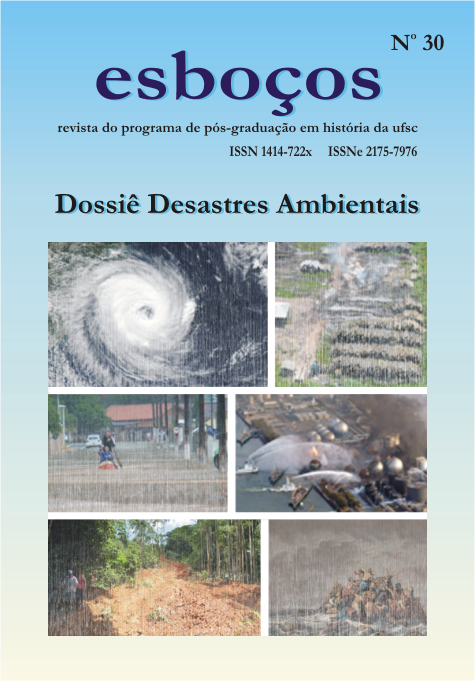The nature’s risk: landscape and risk in the analysis of socioenvironmental disasters
DOI:
https://doi.org/10.5007/2175-7976.2013v20n30p52Abstract
The present paper discusses the use of the concept of risk to rethink the notion of landscape, and employs it to study the history of socioenvironmental disasters. In this way, a discussion is produced about the emergence of landscape concept arising from the plastic arts and appropriated by historical studies. The importance of landscape “de-sacralization” is supported by the understanding of a constant exchange between perception and representation in order to define Nature. The Environmental History, in its turn, also considers human interference is important to the landscape construction and transformation. There is a strong anthropic element in the disaster definition because normally the extreme climatic events are featured as disaster when they affect human populations. Due to these issues, the risk perception of new disasters change the environment understanding people have. The Risk Society notion from Ulrich Beck offers a fruitful ground to environmental disasters and uncertainty’s sense discussion in contemporaneous societies.Downloads
Published
2013-12-19
How to Cite
Silva Lopes, A. R. (2013). The nature’s risk: landscape and risk in the analysis of socioenvironmental disasters. Esboços: Histories in Global Contexts, 20(30), 52–66. https://doi.org/10.5007/2175-7976.2013v20n30p52
Issue
Section
Special issue
License
Esboços: histories in global contexts adopts an Open Access policy and it is licensed under a Creative Commons Attribution 4.0 International License (CC-BY 4.0). Authors will be asked to sign an open access license agreement before publication.
Authors who publish with this journal agree to the following terms:
- Authors grant the journal Esboços: histórias em contextos globais (ISSN 2175-7976) right of first publication with the work simultaneously licensed under a Creative Commons Attribution 4.0 International License (CC-BY 4.0).
- This license allows users to remix, transform, and build upon the material, on the condition of giving acknowledgement of the work's authorship and initial publication in this journal.
- 3.Authors are able to enter into separate, additional contractual arrangements for the non-exclusive distribution of the journal's published version of the work (e.g., post it to an institutional repository or a personal website, or publish it as a book chapter or a translation).

This work is licensed under a Creative Commons Attribution 4.0 International License.







